

London Temperance Hospital - LON - Nov 2009
London Temperance Hospital sits behind Euston Station in central London. It was opened in 1873 on Gower St. at the height of the Temperance movement. They wanted a hospital that would avoid use of alcohol unless absolutely essential to life. It was managed by a board of 12 teetotallers, who were rumoured to not be much fun(!). Inpatients were admitted to the new hospital free by a letter from a governor, or on payment of a fixed amount. Outpatients could be admitted with a governor's letter or pay at least a shilling a visit. The hospital moved to itís current site on Hampstead Road after purchasing land from St. James Church in 1879. It was opened in 1885. In 1931 the hospital expanded when Chicago magnate Samuel Insull donated $160.000 to build a new extension, the "Insull Memorial wing." In 1939 it became the National Temperance Hospital, and in 1948 it was incorporated into the newly formed NHS. It was closed in 1990, and used for various courses and admin purposes by Middlesex Hospital/UCL until Middlesex hospital began to be closed down.
This place looked really interesting on the outside, all very workhouse Victorian Gothic.
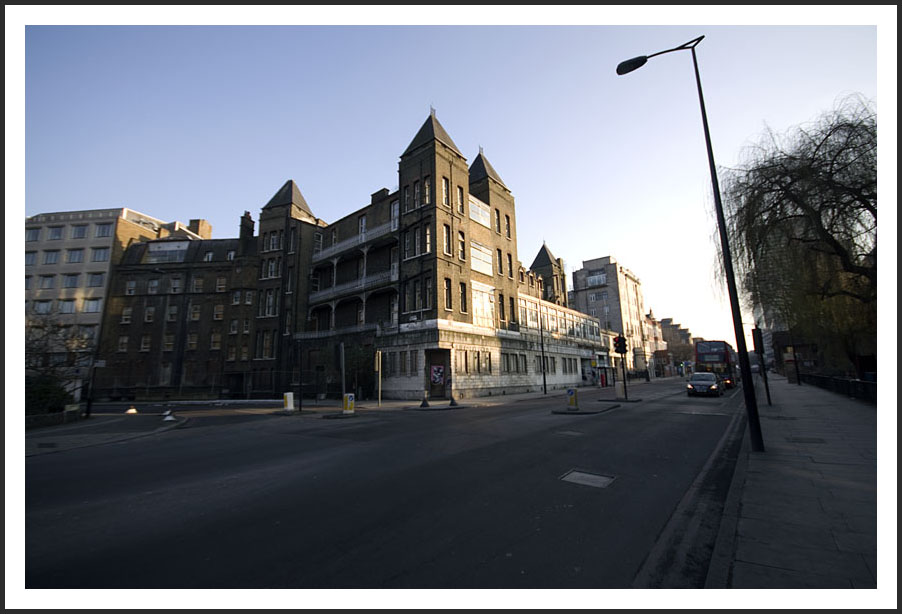
When we did get in, which was a back breaking ball ache, we found that the main hospital had been pretty much totally stripped and virtually none of the original Victorian interior remained let alone any clue that it had once been a hospital. Mostly it looked like this, very, very characterless.
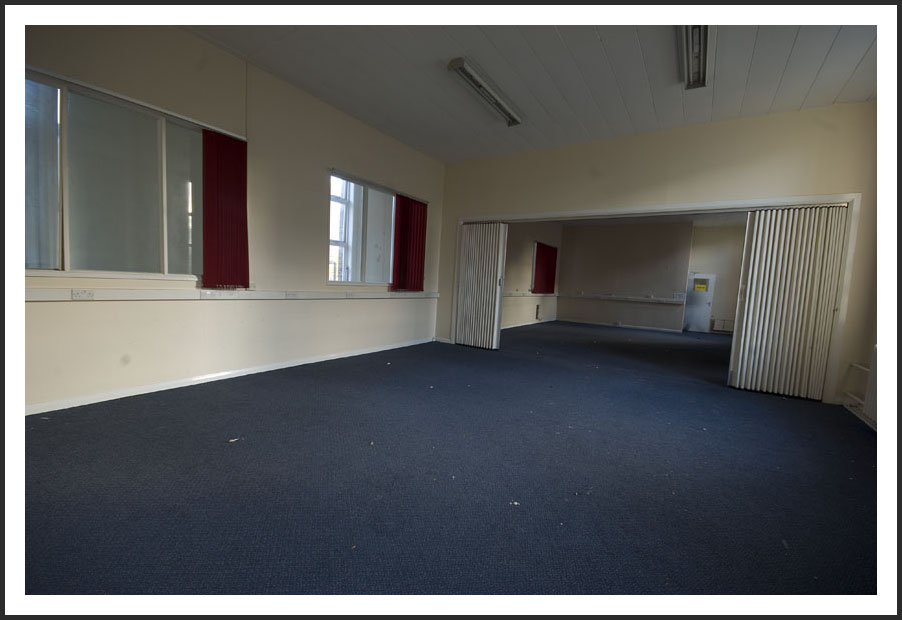
I've really only included the building on my site as a sort of guide for fellow explorers; worth it or not? Up to you.
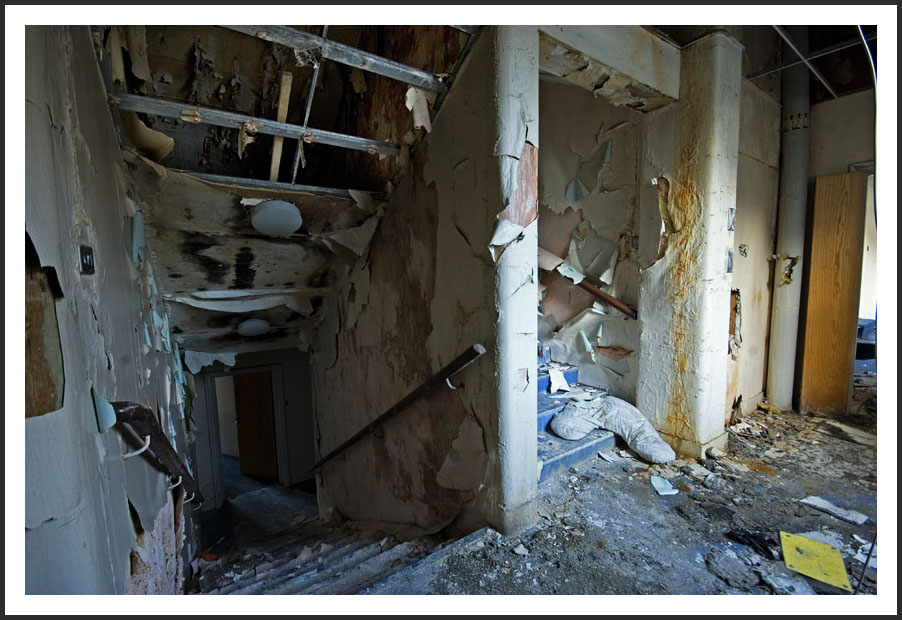
One of the few original features.
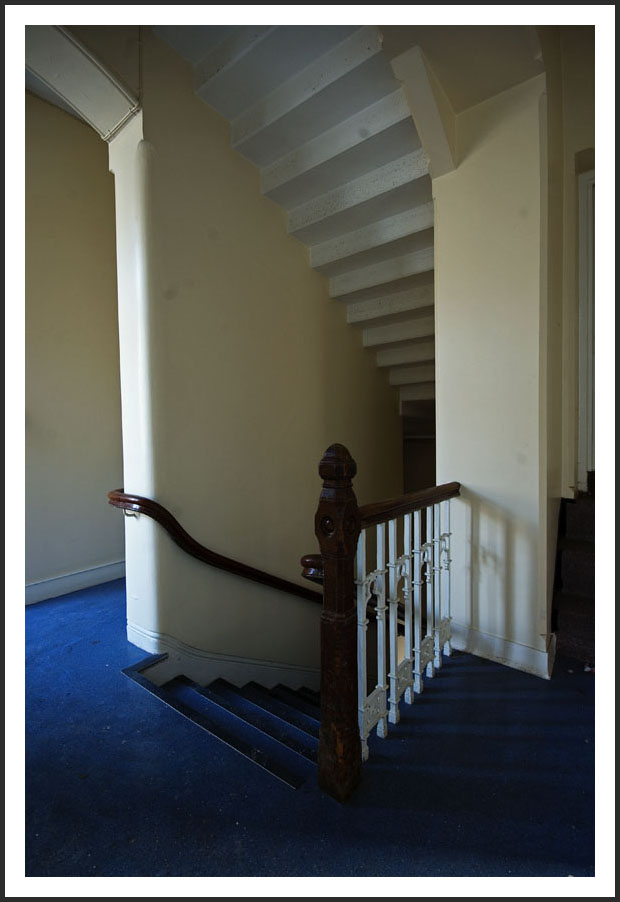
The rooms with the doors leading to the external...
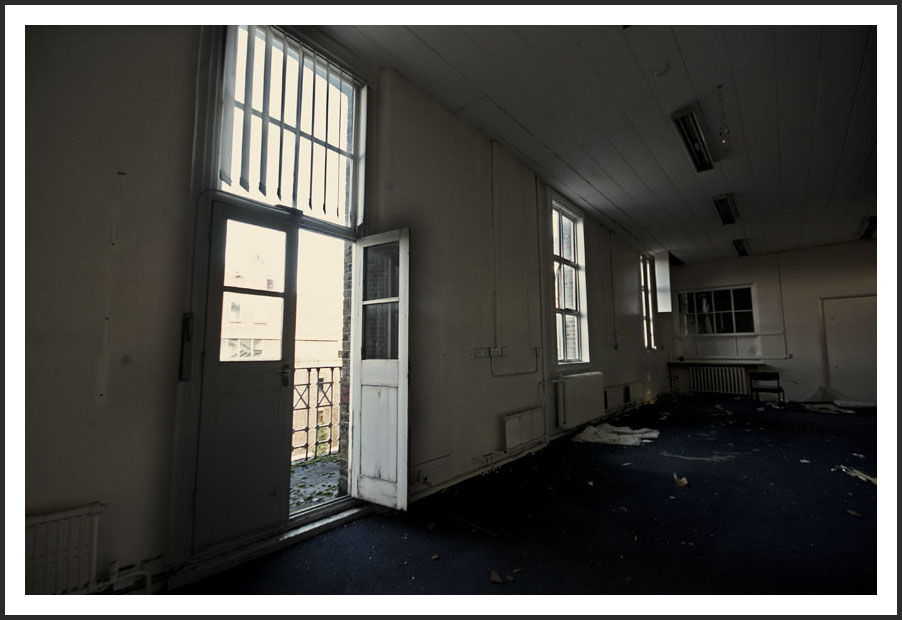
...wrought iron railed balconies, which can be seen in the first picture.

View of the inner court yard.
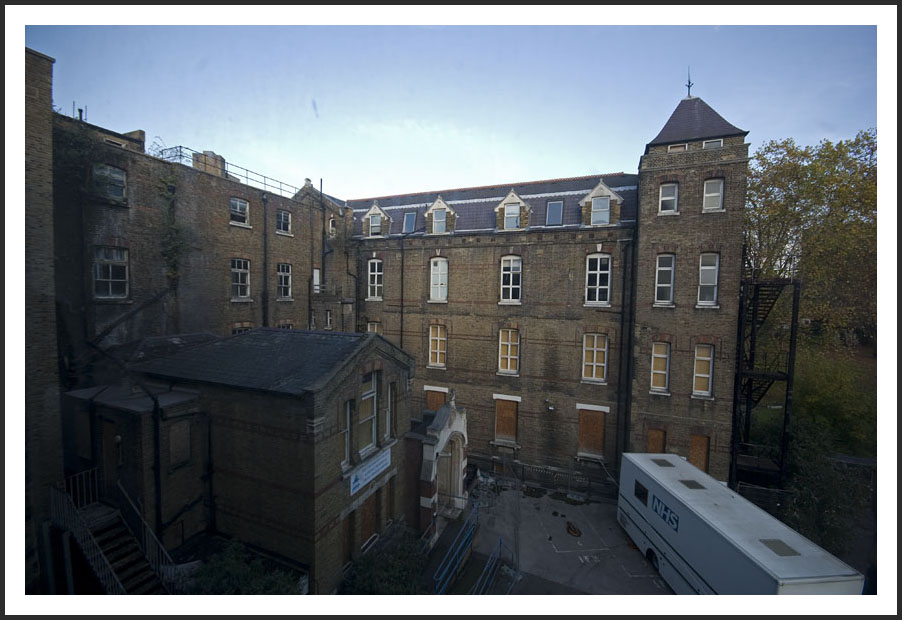
Still, from an architectural perspective, the two glass corridors, or conservatoires, were quite nice and I remember thinking looked pretty cool when I used to go past them on the bus when I worked in the area. They can be seen in the picture below. One links to the Insull Memorial Hospital building next door (on the far right) but unfortunately access was totally blocked when we tried to get in.
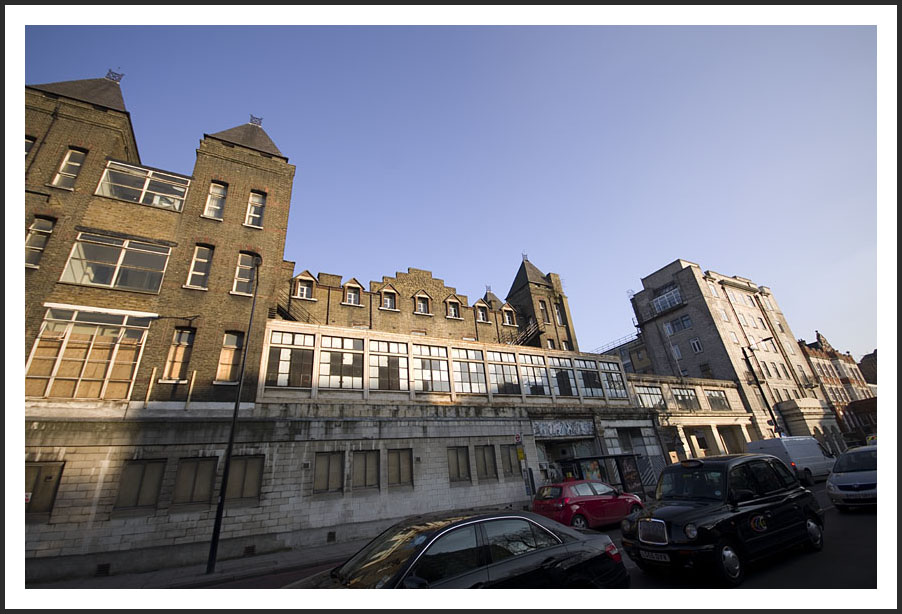
Inside, looking towards the Insull block.

At the far end looking back.
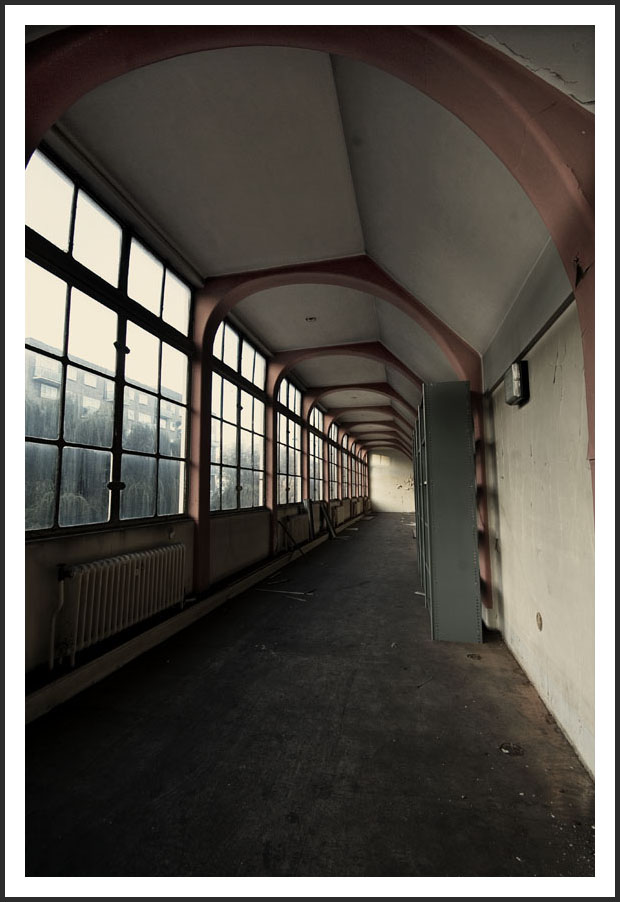
The linking corridor to the Insull block, at the far end.
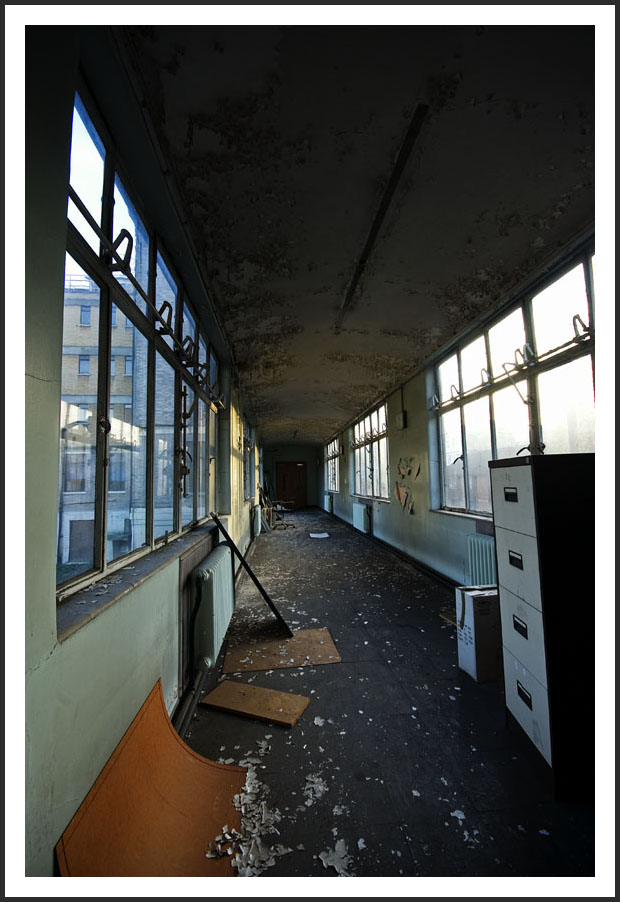
More wrought ironwork, just behind the first corridor. So I guess the corridor must have been a later addition.
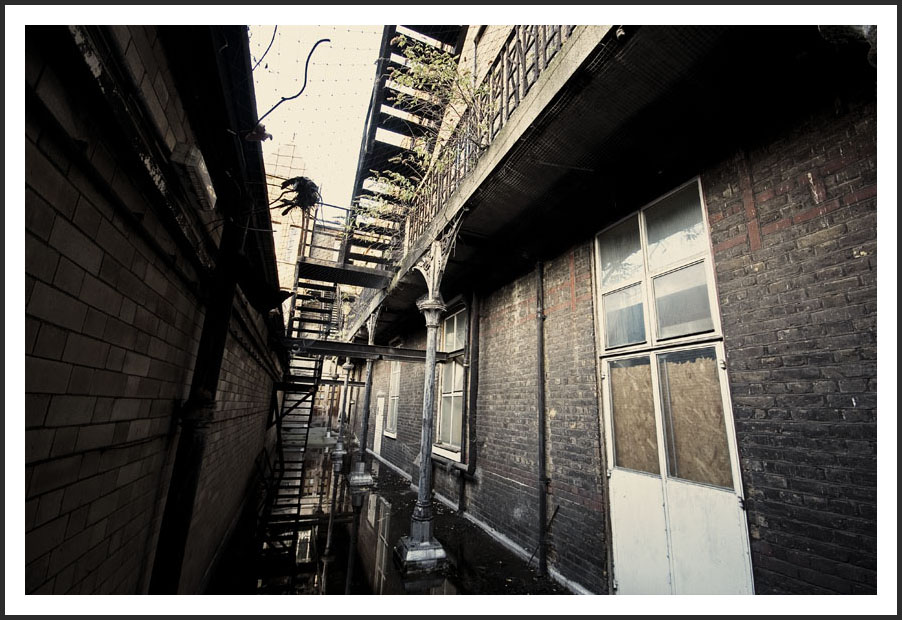
The only item of hospital equipment we did find. A drip stand in the basement.
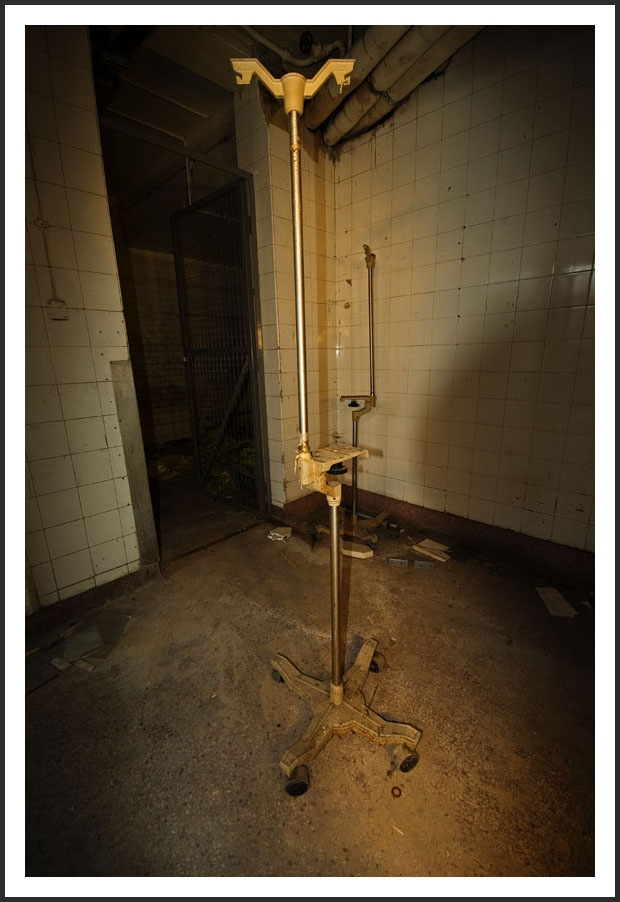
Flooded boiler room.
